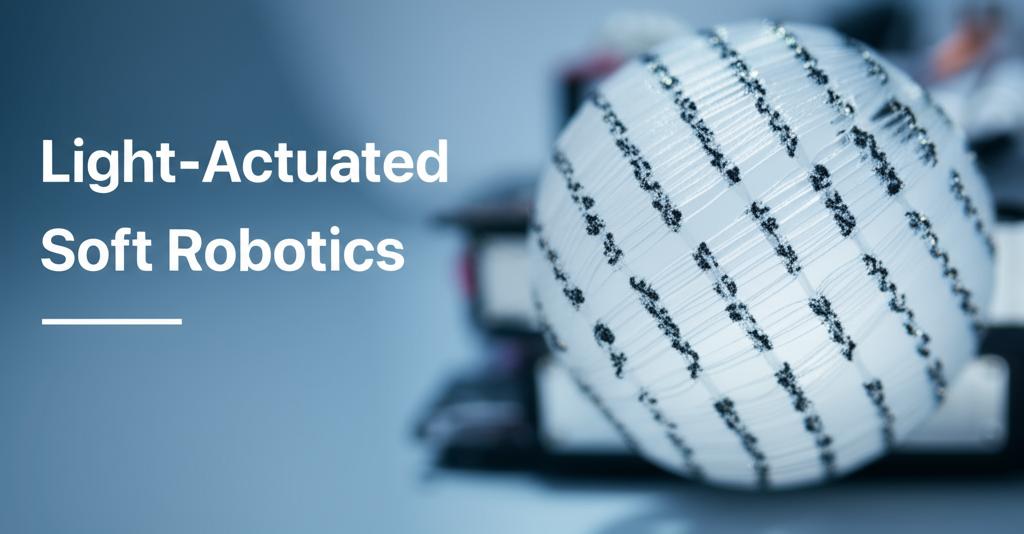Soft robotics represents a paradigm shift from traditional rigid robots, drawing inspiration from biological systems to create machines with inherent flexibility, adaptability, and safety for interacting with complex environments, including humans. A key area driving innovation within this field is actuation – how these robots are powered and made to move. Light-actuated soft robotics offers a particularly promising avenue, enabling wireless control and unique functionalities impossible with tethered systems.
How Light Makes Soft Robots MoveLight-driven actuation typically relies on converting light energy into mechanical work through two main mechanisms:
- Photothermal Effect: This is the more common approach. Specialized materials within the robot absorb light (often visible or near-infrared) and convert it into heat. This localized heating causes the material to expand, contract, or change shape due to thermal expansion principles or by triggering a phase transition in materials like shape memory polymers or liquid crystal elastomers. The deformation generates movement, such as bending, folding, or crawling. Materials like graphene or gold nanorods are often incorporated into polymer matrices to enhance light absorption and heat generation.
- Photochemical Effect: In this mechanism, light directly triggers chemical reactions or molecular changes within the material. For instance, certain molecules like azobenzene can switch between different shapes (isomers) when exposed to specific wavelengths of light (like UV and visible light). This molecular-level change, when incorporated into a polymer network, can lead to macroscopic deformation and actuation of the robot. This process can be reversible, allowing for controlled back-and-forth motion.
By carefully controlling the intensity, direction, and wavelength of the light source, complex movements and tasks can be achieved remotely without physical tethers.
The Building Blocks: Materials Responsive to LightThe performance of light-actuated soft robots hinges critically on the materials used. Key material categories include:
- Liquid Crystal Elastomers (LCEs): These are smart materials combining the properties of liquid crystals and rubbery elastomers. They can exhibit significant, reversible shape changes in response to stimuli like heat or light, making them excellent candidates for light actuation, especially via the photothermal effect. Recent research focuses on incorporating nanomaterials like gold nanorods into LCEs to enhance their light responsiveness and enable 3D printing.
- Hydrogels: Particularly photoresponsive hydrogels, these water-swollen polymer networks can change volume or shape upon light exposure. They offer advantages like biocompatibility, making them suitable for biomedical applications. However, their operation is often limited to specific environments (e.g., requiring hydration). PNIPAM-based hydrogels are common examples studied for light and temperature response.
- Shape Memory Polymers (SMPs): These polymers can be programmed into a temporary shape and then recover their original shape upon application of a stimulus, often heat. Light can be used as a trigger via the photothermal effect, converting light energy into the necessary heat for shape recovery.
- Composites: Many advanced light-actuated robots utilize composite materials, embedding photo-active particles (like graphene, carbon nanotubes, or metallic nanoparticles) into flexible polymer matrices (such as PDMS or Ecoflex). This allows for tuning the mechanical properties and light response of the final actuator.
Recent efforts also explore single-layer materials capable of responding to multiple stimuli (like light and vapour) and developing robust, 3D-printable photo-responsive materials.
Putting Light-Actuated Soft Robots to Work: ApplicationsThe unique capabilities of light-actuated soft robots open doors to numerous applications:
- Biomedical Engineering: Their small size, wireless control (especially using near-infrared light which can penetrate biological tissue), and potential biocompatibility make them ideal for minimally invasive procedures, targeted drug delivery, in-vivo imaging, diagnostics, and micromanipulation inside the body.
- Microrobotics: Light allows for precise control of very small robots for tasks like manipulating micro-scale objects, acting as micro-grippers, or performing functions in microfluidic devices.
- Biomimicry: Researchers create robots that mimic the locomotion of organisms like caterpillars, inchworms, snails, or jellyfish, leveraging light to induce crawling, rolling, swimming, or grasping motions.
- Environmental Monitoring: Untethered, light-powered microrobots could potentially navigate complex environments to collect samples or data.
- Smart Devices: Concepts include light-controlled smart curtains, valves, or components within larger systems.
Despite significant progress, challenges remain in the field of light-actuated soft robotics. Compared to other methods like pneumatic or magnetic actuation, light-driven systems can sometimes face limitations in terms of actuation force, speed, and energy efficiency. Precise control over complex movements in 3D space remains an active area of research. Material durability and performance in diverse environmental conditions are also crucial considerations.
Future research directions focus on developing novel materials with enhanced light sensitivity, faster response times, and greater mechanical output. Integrating sensing capabilities directly into the soft robot structure for feedback control is another key goal. Advanced fabrication techniques, like multi-material 3D printing and kirigami-inspired designs, are enabling the creation of more complex and functional light-driven soft robots. As these challenges are addressed, light-actuated soft robots are poised to play an increasingly important role in areas ranging from healthcare to micro-manufacturing and exploration.

